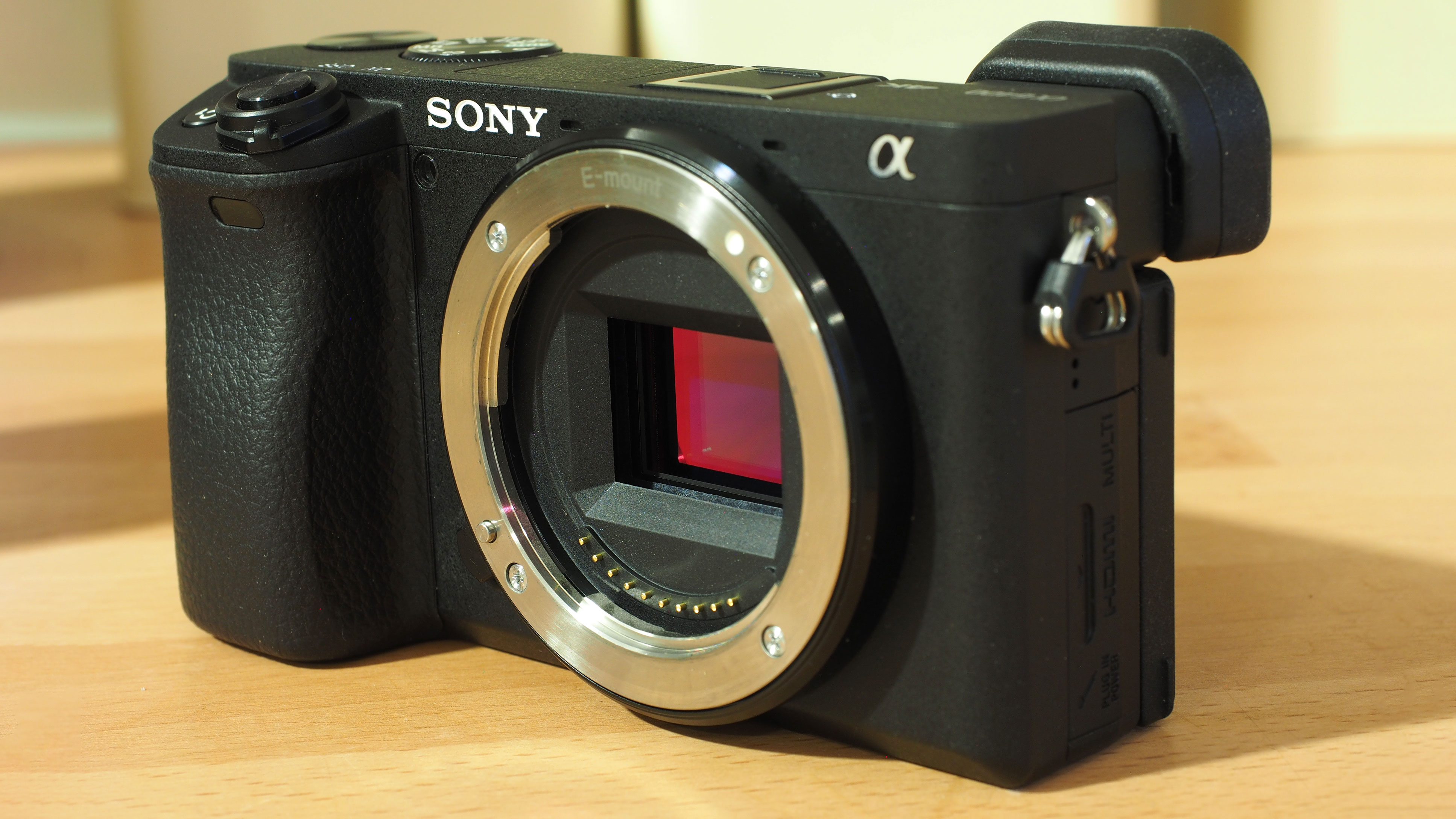Digital Camera World Verdict
For bloggers, vloggers and independent content creators, the Sony A6400 is a dream. Its still image quality is very good, its 4K video is even better, and its 180-degree screen and eye-detect AF are perfect for single-handed video capture. But this is a specific market, and for regular stills photographers its high-tech image capture is poor consolation for its five-year-old design and limited external controls.
Pros
- +
180-degree screen for vlogging
- +
Terrific if complex AF
- +
Very good image quality
Cons
- -
Limited external controls
- -
Interminable menu system
- -
Dated rear screen and EVF
Why you can trust Digital Camera World
Launched in 2019, the Sony A6400 joined the ever-cluttered lineup of A6XXX series cameras as the former vlogging specialist. However, quite a bit has changed in the past three years.
Principally, the Sony APS-C mirrorless range has now been joined by the new Sony ZV-E10. It doesn't have an A6XXX-series model name (presumably because Sony wants to distance it from the existing cameras), but in reality the technology is the same and it's only the external design that's different.
Where the A6400 was merely adapted for vlogging, the ZV-E10 is made from the ground up for it – and this, along with its price, makes it the Sony's best vlogging camera with an APS-C sensor, ahead of the Sony A6400.
Of course, the A6400 still has plenty to recommend it – as does the rest of the family. So make sure to check out our Sony A6000 vs A6100 vs A6300 vs A6400 vs A6500 vs A6600 vs A67000 septuple header, and keep on reading to see if the A6400 is still right for you in 2023…
Sony A6400 review: Specifications
Sensor: 24.2MP APS-C CMOS, 23.5 x 15.6mm
Image processor: BIONZ X
AF points: 425-point phase detection, 425-point contrast AF, 84% coverage
ISO range:100 to 32,000 (exp. 102,400)
Max image size: 6,000 x 4,000px
Metering zones: 1,200
Video: 3,840 x 2,160 at 30p, 24p
Viewfinder: EVF, 2,359k dots, 100% coverage, 1.07x (0.7x equiv) magnification
Memory card: 1x Memory Stick Pro Duo/SD/SDHC/SDXC, UHS I
LCD: 3-inch 180-degree tilting touchscreen, 921k dots
Max burst: 11fps
Connectivity: Bluetooth, Wi-Fi, NFC
Size: 120.0 x 66.9 x 59.7mm (body only)
Weight: 403g (body only, with battery and memory card)
Sony A6400 review: Key features
Sony continues to push back the boundaries of processing and autofocus performance, bringing out new technologies in its flagship professional cameras and then filtering these down through the range to its consumer models. So indeed the A6400 has inherited the autofocus DNA of the full frame A9, A7R III and A7 III models, boasting 425 phase-detection, 425 contrast AF points and what Sony claims to be the world’s fastest AF acquisition time of 0.02sec.
This autofocus system covers approximately 84% of the image area and is sensitive down to -2EV. It also boasts Sony’s already legendary Eye AF system, both in single-shot and continuous shooting mode, and Eye AF support for animals is due to be added in summer 2019.
The best camera deals, reviews, product advice, and unmissable photography news, direct to your inbox!
You don’t just get Sony’s Real Time Eye AF, but real-time tracking for objects, too, thanks to AI-based object recognition which processes colour, subject distance and patterns as ‘spatial’ information.
Sony’s renowned for its video expertise too, and while the A6400 does not offer 60/50p 4K capture like a couple of its rivals, it does use full pixel readout, capturing ‘oversampled’ 6K data and then downsampling it to 3,840 x 2,160 UHD resolution. Sony claims advanced AF speed and stability, thanks to his camera’s upgraded autofocus technology, and it comes with HLG (Hybrid Log Gamma) for HDR playback on compatible TVs, plus Sony’s S-Log2 and S-Log3 gamma modes – the S-Log3 mode is said to offer up to 14EV latitude (dynamic range).
The A6400 can capture 4K video at 30fps in the XAVCS format at bitrates up to 100Mbps or full HD at up to 120fps at the same bitrate. It also offers clean HDMI output to external recorders via its HDMI port.
Apart from the advanced autofocus and powerful 4K video features, the A6400 is pretty conventional. It uses a 24.2MP APS-C Exmor CMOS sensor matched up to Sony’s latest-generation BIONZ X processor, which captures images as 14-bit data which is converted to 16-bit for processing and then back to 14-bit raw files. Sony says the A6400 has advances in image quality and colour reproduction with improved noise reduction and texture rendition.
In continuous shooting mode, the A6400 can maintain 11fps with its mechanical shutter and AF/AE tracking, though that’s with the viewfinder in ‘after view’ mode, which is not the best for keeping up with fast-moving subjects. For this there’s an 8fps ‘live view’ mode, and you can also shoot at 8fps in silent mode. The buffer capacity is pretty fair at 116 standard JPEGs and 46 compressed raw files.
The magnesium alloy body is dust and moisture-resistant and Sony claims a 200,000-shot shutter life. The external controls are relatively few, but it’s possible to assign 89 functions to 8 different custom keys. Sony has added new My Dial and My Menu options and enhanced the overall menu usability, though there’s still an awful lot of menu screens to cycle through.
The body is quite small so there’s only space for one memory card, and it’s slightly surprising that it’s a UHS-I type rather than the faster UHS-II. The A6400 does have a fairly substantial battery, though, with a life of 360 shots when using the viewfinder and 410 shots using the rear screen.
This screen is perhaps the A6400’s ‘killer’ feature. It flips up through a full 180 degrees so that you can see yourself while you’re filming yourself presenting to the camera. It’s also touch-sensitive, though it’s relatively small so you’re going to have to be quite precise when setting the focus point.
Sony A6400 review: Build and handling
It’s very interesting to compare the A6400 side by side with the original A6000, launched way back at the dawn of time (all right, 2014) to see that very little has changed. The A6400 has plumped out a bit around the middle, thanks to the new 180-degree tilting screen on the back, but otherwise it’s like looking at practically the same camera.
That’s both a good and a bad thing for the A6400. It’s good in that its layout is going to be instantly familiar to anyone who’s used an A6000, A6300 or A6500, and it is a neat, compact, crisp-feeling design.
What’s not so good is that all its new features – and the A6400 has come a long way since the A6000 – are accessed electronically via menus, screens, dials and function buttons. The A6400 has a super-sophisticated AF system, high-speed continuous shooting and powerful 4K video features, but it’s all buried inside this pretty but generic body.
You get a mode dial, an unmarked command dial and one of those combined four-way directional pad/spinning dial controls on the back that’s a bit too easy to press when you meant to spin… and that’s it. The A6400 does sport a button for swapping AF modes, and if you want to change the AF area you can do that with the Fn button on the back, and there are custom buttons here, there and everywhere, but it’s all very digital. What happened to good old knobs and dials? When a camera has such a series of key strengths and capabilities, it’s a bit annoying they’re not more externally accessible.

But Sony’s cameras are hugely customisable, and the A6400 lets you assign 89 different functions to 8 custom keys. You can also set up your own My Dial and My Menu options. If you don’t mind ‘programming’ your camera to suit your shooting, this is fine, and we know plenty of Sony fans who love all this stuff. But if you like your controls big, obvious and accessible, the A6400’s digital-first design could prove quite tiresome.
That’s not the only thing. The fact that you only get a 3-inch screen is not really a problem, but that it still has the modest 921k-dot resolution of the original A6000 is a bit of a surprise. Worse, this is a 16:9 screen, so it’s great for video but not so good for 3:2 ratio stills photography, where you get a smaller-than-usual image with black bars either side.
The rear screen isn’t just a bit cramped, it’s also easily swamped by glare in bright outdoor lighting. You can swap to the EVF in these conditions, but with its 2,359k dot resolution, even this is no better than it has to be.
On the upside, all the controls feel strong, firm and positive – though we’ve already mentioned that too-easily-clicked rear spinner. The magnesium alloy body is dust and moisture sealed, and the inside there’s a mechanical shutter with a 200,000 shot shutter life. It also has an extremely satisfying mechanical ‘snap’ when you press the shutter release.
The 180-degree screen is a huge bonus for blogging, though the A6400 is a bit too heavy for any extending handheld shooting on a selfie stick – you’d be better off doing your pieces to camera with a small tripod or some other support. It’s such an advantage to be able to see yourself while filming, though the small screen on the A6400 means it’s not so easy to make out what’s happening as it is with a smartphone, for example.
Sony A6400 review: Performance
The A6400 feels as fast and responsive as its high-tech AF specs would suggest. The face/eye detection follows faces around the frame with no lag at all, and in continuous AF/continuous shooting mode, the autofocus responded to changes in subject distance practically instantly. The Real Time Tracking AF seemed a bit more sluggish, though, as it seemed to lose fast moving subjects and needed a couple of frames to find them again, but that was only when it was deliberately provoked – it handled relatively slow-moving subjects fine.
You can buy the A6400 body only, with the compact Sony 16-50mm power zoom lens or pay more to get it with the comparatively new Sony 18-135mm zoom. This is naturally bulkier than the 16-50mm, but optically much better – in fact it’s sharper across the full zoom range than we’re used to seeing with lenses that have a zoom range this long. It’s also neat, fuss-free and smooth to use.
There is a lot of digital correction going on with this 18-135mm lens, though. You won’t see it in the JPEGs, which are corrected in-camera, but if you view the raw files in a program that doesn’t automatically apply Sony’s built-in correction data you’ll see huge barrel distortion at the wide-angle end of the zoom range where the corners of the frame are actually clipped to black. This is clearly a lens never designed to be used uncorrected.
The still image quality is very good indeed. Images are sharp and detailed, and the colour rendition seems both rich and natural. The exposure system reacted predictably in a wide range of lighting conditions and the auto while balance works well too.
The A6400 also offers a variety of picture styles for JPEG shooters, though black and white fans will be better off shooting raw files and processing them themselves rather than using the in-camera black and white rendition, and the Sunset mode gave a vivid sunset scene into a rather bilious yellow/green tinge, so we turned that off pretty quickly.
If you want the best quality from this camera you’re better off shooting raw files, and these came out very well in Adobe Camera Raw, which supports the A6400 already.
Sony A6400 review: Lab tests
When we came to find rival cameras for the A6400 we realised it doesn’t have many direct competitors – in fact its combination of 24-megapixel APS-C sensor, built-in viewfinder, 4K video and 180-degree screen are pretty unique.
As rivals, we chose the Canon EOS M50 as perhaps the closest match, though its cropped 4K video isn’t as good as the A6400’s, and the Fujifilm X-T100 as a cheaper alternative that also has a 180-degree screen, though the 4K video is restricted to 15fps, which is next to useless, so the X-T100 is really a full HD camera. We also put it against the far cheaper Olympus E-PL9 which has a smaller 16MP sensor and no viewfinder, but does have 4K video and a 180-degree screen and is pitched at a similar market.

Resolution
In our lab tests the Sony A6400 showed itself to have a slight edge – literally and figuratively – over the Fujifilm X-T100 and Canon EOS M50, while the limitations of the Olympus E-PL9’s 16-megapixel sensor meant it trailed behind the others in fourth place.

Signal to noise ratio
Even though this is now the fourth 24-megapixel model in Sony’s A6000 series and boasts the latest BIONZ X processor, its noise performance is not better than the rest – in fact, in our tests it proved slightly noisier than the other three cameras, especially at higher ISO settings.

Dynamic range
As usual, we found the Micro Four Thirds Live MOS sensor in the Olympus E-PL9 offered unusually good dynamic range across the ISO range. The CMOS sensor (not an X-Trans type) in the X-T100 came second and the A6400 and EOS M50 were pretty much level in third place.
Sony A6400 review: Verdict
When it was launched, the Sony A6400 didn't have too many direct vlogging rivals. That's all changed, with cameras like the Canon EOS M6 Mark II, Fujifilm X-S10, Olympus OM-D E-M5 Mark III and Panasonic Lumix G9 II, many of which can boast vari-angle not just tilting screens, and some of which have in-body stabilization.
This leaves the A6400 mildly disappointing. It’s a small camera with few external controls that hasn’t really developed physically since the A6000 and relies too heavily on its digital interface. The EVF and small rear screen seem especially weak by today’s standards.
And while its autofocus is exceptionally advanced and it has a good continuous shooting speed with a reasonable buffer capacity, the A6400 is just the wrong shape for shooting sports, wildlife and other action subjects with big lenses.
The image quality is certainly good, but the same can be said for any of its APS-C mirrorless rivals, many of which cost a good deal less.
For bloggers, vloggers and independent content creators, the Sony A6400 is very good. Its still image quality is first rate, its 4K video is even better, and its 180-degree screen and eye-detect AF are handy for single-handed video capture. Even so, its high-tech image capture is poor consolation for its five-year-old design and limited external controls.

Rod is an independent photography journalist and editor, and a long-standing Digital Camera World contributor, having previously worked as DCW's Group Reviews editor. Before that he has been technique editor on N-Photo, Head of Testing for the photography division and Camera Channel editor on TechRadar, as well as contributing to many other publications. He has been writing about photography technique, photo editing and digital cameras since they first appeared, and before that began his career writing about film photography. He has used and reviewed practically every interchangeable lens camera launched in the past 20 years, from entry-level DSLRs to medium format cameras, together with lenses, tripods, gimbals, light meters, camera bags and more. Rod has his own camera gear blog at fotovolo.com but also writes about photo-editing applications and techniques at lifeafterphotoshop.com













